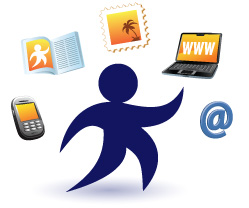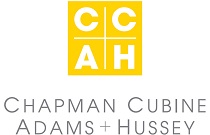
Adding Social Media and Mobile to Your Direct Fundraising
 Email, Facebook, Twitter, mobile… it can be confusing for nonprofit organizations to choose where they should communicate with donors. It can be confusing for donors, too.
Email, Facebook, Twitter, mobile… it can be confusing for nonprofit organizations to choose where they should communicate with donors. It can be confusing for donors, too.
Donors, even older donors, are embracing a wide variety of communication channels, and they will continue to do so in the coming years. The answer? Nonprofits can make the following channels work better individually by making them work together:
- Direct mail
- Voice telephone (incoming phone calls)
- Online social media (Facebook, Twitter, Pinterest etc.)
- Events
- Mobile
The growth of social media and mobile has been rapid, even among seniors who make up a majority of the donor base for some nonprofits. Consider just a few statistics:
- Smartphone growth is growing to the point that more Americans have smartphones than the previous generation of “feature phones.” Yes, it’s growing faster among young people, but it is growing all the way up the age demographic:
- 13% of all seniors (65+ years of age) have a smart phone, but that represents an average between 5% of low-income seniors and 27% of seniors with incomes of $30,000 or more. Yes, five percent of “poor” seniors actually have a smartphone!
- 32% of adults 55-64 and 44% of adults 45-54 have smartphones, and they’re not likely to give them up as they mature into their prime giving years.i
- Remember, five years ago 0% of adults had smartphones.
- Smartphone users do lots more than talk and text:
- 84% of smartphone users access the Internet on their phone.
- 76% send and receive email.
- 59% access social media.
- More than 50% shoot, send, receive and watch photos and videos and post them to online social media on their phones.
- 37% do some online banking on their phones (this indicates a willingness to use the device to conduct financial transactions like donations).ii
- “Twitter users are more interested in connecting with public figures than are social media users who do not use Twitter.” 11% of Twitter users say that “reading comments by politicians, celebrities or athletes is a major reason they use online social networks,” compared with just 4% of users of other online social networks. Isn’t it conceivable that they’d equate the leader of your organization at least as high as Justin Bieber?iii
- Amergent's Vital Signs Analysis™ of Catholic clients’ donor files indicates that donors who have provided an email address to the organization give more often, and at a higher amount, than their cohorts without an email address. The result is usually two or two-and-one-half times the total donor value. This proves that it pays to converse with your donors across multiple channels.
With these facts in mind, here are five ideas to help you interact with your donors across these channels:
- Improve your email performance by combining your email messaging with your social media presence. Use snippets of your email content to create Facebook posts and Twitter tweets. Social media expands your reach because it meets your supporters where they “live.” With consistent messaging across channels, it can help increase open rates and boost overall conversion.
- Text-to-give is NOT a significant part of fundraising. After some $40 million was raised in $10 gifts through cell phones for the Haiti earthquake response in January, 2010, every nonprofit had dreams of cell phones as mobile donation machines. Even for the Red Cross, those dreams seem to have evaporated. Until the next world-wide disaster that spurs televised fundraising specials, it will have limited impact. And when that happens, only a handful of big-name disaster response nonprofits will benefit. Pollyanna would look on the bright side and say, “Millions of people got comfortable using their mobile phones to make a donation to a charity. Maybe now they’ll be more likely to use their phone to make a gift via a web page in response to my email.” And, she’d be right.
- Use your direct mail packages to support others channel and vice versa. Test every change you make in your mail, since this is probably your bread-and-butter fundraising channel.
- Ask for mobile numbers (but don’t require it) on your donation form and newsletter signup form. If you can associate phone numbers with donors, you can track the impact of mobile communications, and you can reach out to donors via phone when their mail and email start bouncing.
- Always try to tie all your donor data together into one donor record: postal address, email, home phone, mobile phone, twitter handle, whether they are a Facebook fan. This will help you segment your file but will also help you to validate the added value of contact through each of these channels.
Since the future of mobile and online social networking is growing, it pays to recognize its potential for your organization. Choose one area where you think mobile and/or social media can be effective for your organization and get started!
i Pew Internet: “Nearly half of American adults are smartphone owners” Mar 1, 2012
ii Pew Internet: “Americans and Their Cell Phones” Aug 15, 2011
iii Pew Internet: “Why Americans use social media” Nov 15, 2011
Learning Opportunity: Getting Your Nonprofit's Word Out Through Integrated Marketing
 Integrated marketing and fundraising is the key approach for any nonprofit organization looking to get its message out in the 21st Century. That’s why the IMAB has teamed up with NTEN to offer a three-part webinar series that gives you tips and insights from fundraising and marketing experts at leading agencies and nonprofit organizations. Sign up for one or more of the webinars, and get ready to learn how you can get the word out about your organization through integrated marketing:
Integrated marketing and fundraising is the key approach for any nonprofit organization looking to get its message out in the 21st Century. That’s why the IMAB has teamed up with NTEN to offer a three-part webinar series that gives you tips and insights from fundraising and marketing experts at leading agencies and nonprofit organizations. Sign up for one or more of the webinars, and get ready to learn how you can get the word out about your organization through integrated marketing:
Thursday, Feb 7
Webinar 1: What Do Your Best Friends Want?
an exploration of motivations, channel choices and needs of the 21st century supporter
To get your nonprofit’s message out to supporters, your marketing approach needs to do two key things:
1. Deepen the relationship with existing (and often slightly older) donors; and
2. Find and engage new (and often younger) donors.
Essentially, you need to maintain relationships and slowly reinvent your donor base—at the same time. This exciting webinar will provide one-of-a-kind analysis and thinking on what Gen Z, Gen Y, Gen X, Boomers and Civics really want and need to support your organization. We’ll talk about their favorites: communication channels, ways to give, and ways to communicate with your organization.
This webinar will provide the foundation for a deeper integrated marketing conversation and plan.
Thursday, Feb 14
Webinar 2: Are You an Ox Cart or Ferrari?
an exploration of how a nonprofit can best run itself to meet the demands of 21st century marketing and fundraising
To communicate a message effectively, every charitable organization needs to ensure alignment between systems, structure, culture and strategy. How does a nonprofit best integrate people, technology, business rules, and organizational structure to create an environment that will let integrated marketing thrive? This fact-based webinar will provide an inside look at how best practice organizations use leading thinking on internal reporting, skills development, the balanced scorecard, strategy map and other organizational aids to success.
This webinar will provide the building blocks for creating an integrated, cohesive organization.
Thursday, Feb 21
Webinar 3: Can You Get Your Jet Off the Runway?
an exploration of how nonprofit organizations plan, execute, and evaluate integrated marketing and fundraising programs
When it comes to getting their message out with limited budgets, charitable organizations learn what to try and what to avoid by looking at what other organizations are doing. This webinar presents breakthrough case studies, and is best suited for nonprofit marketing and fundraising practitioners who want to learn from colleagues who have mastered integrated marketing and fundraising. You’ll have a chance to listen to, and ask questions of, the top award-winning IMAB integrated fundraising programs.
This webinar will give you the chance to observe, learn, and interact with award-winning integrated marketing and fundraising organizations. Why not learn from the best?
Share, Like and Post | | Article Link | CommentThe IMAB Integrated Marketing Awards for Nonprofits Are Back!
 Do you have an example of integrated marketing success that you’d like to share with the industry? Nominate a nonprofit showing exemplary progress in integrated marketing. The 2013 Integrated Marketing Awards will be presented at the Nonprofit Technology Conference (NTC) in Minneapolis, MN this April 11-13.
Do you have an example of integrated marketing success that you’d like to share with the industry? Nominate a nonprofit showing exemplary progress in integrated marketing. The 2013 Integrated Marketing Awards will be presented at the Nonprofit Technology Conference (NTC) in Minneapolis, MN this April 11-13.
In the spirit of the IMAB's mission to share best practices in integrated marketing in the nonprofit industry, we’ve established this annual contest. The IMAB recognizes and showcases innovative and demonstrated success in three established pillars of integrated marketing: the donor, the organization and the practice.
- The Donor: Demonstrate how your organization’s integrated marketing campaign or program had an impact on donor satisfaction and the donor experience.
- The Organization: Explain how an effort across your entire organization demonstrates alignment of strategy, structure, culture and skills to showcase integrated marketing efforts.
- The Practice: Include a real-world case study that highlights best practices in the field of integrated marketing.
The call for entries is now open.
Three winners will be announced at NTC 2013 this April. Submit a case study today! Deadline for entries: Friday, March 8, 2013. The IMAB will review each nomination, select winners and present the awards.
Last year’s winners of the IMAB Integrated Marketing Awards were:
- CARE, a leading humanitarian organization fighting global poverty, won in the category of The Donor.
- The Ontario SPCA, one of the largest, most responsive animal welfare organizations in Canada, won in the category of The Organization.
- TVO, Ontario's public education media organization, won in the category of The Practice.
How to Bring Integrated Marketing to Life for Your Nonprofit
This article was written by guest author, Sheetal Persaud, senior consultant at hjc in Toronto, and was edited by Dennis McCarthy, vice president strategy & business practice, Target Analytics, a Blackbaud company. The article originally appeared on npENGAGE.
 For years, agencies and nonprofits have been preaching about integrated marketing.
For years, agencies and nonprofits have been preaching about integrated marketing.
And while many of our nonprofit clients are now getting the why of integrated marketing, they are struggling with the how. When teams and programs have been siloed for so long, how do you start working as a more cohesive team?
We always say, "start small" as you segue into more complex integrated marketing campaigns. There is no need to reinvent your siloed programs from day one. You can start by picking a campaign to start testing integration. It could be sending emails in conjunction with a direct mail package or telemarketing following an online advocacy campaign.
We often say that integrated marketing is a "full contact sport." That can mean that to create an integrated plan, you need to gather teams around a single table and hash out who does what, what message to use and what equals success. Create an integrated campaign brief that outlines how different channels will support the campaign, and then break out each channel in more detail.
This process of cross-functional planning will eventually get to be more natural and can extend beyond campaigns. Eventually, you will want to be integrating the overall strategy and business plans of your various business units so you’ll be getting together even earlier in the planning cycle.
Some of the most effective integrated organizations that we know are those that have a dedicated human resource to ensure integration is happening. An integrated marketing manager is responsible for ensuring that opportunities for integration are taking place throughout the organization; in every email, classic direct response, event or in social media — where are the points of connections.
That person is all-seer, an all-doer, and they will often report across teams. One of the biggest barriers to integration is that teams are focused only on what they are doing, and they don’t have time to learn about what others are doing. By dedicating a resource to this role, you can ensure opportunities for integration are not missed. If you can’t afford a dedicated resource, make this part of someone’s job role at your organization (maybe yours!).
Here are some tools (some fairly complex) that we use to ensure integrated marketing success:
- An integrated calendar that captures major marketing, fundraising, program and communication touch points throughout the year.
- An integrated donor plan that shows how a donor is stewarded and upgraded through multiple channels throughout their life cycle.
- A robust database of record that is the central hub for all constituent relationship information.
Furthermore, when you are analyzing the success of your integrated marketing efforts, you may need to look at data differently. If you are suddenly emailing your direct mail file, you’ll want to understand the overall response rate for a campaign in both the online and mail channel, as donors could choose to give in multiple ways.
But beyond campaign performance, the core statistics that you should expect to be improved with integrated marketing are in the areas of loyalty and frequency. A donor who is being well stewarded and appropriately upgraded through multiple channels should give more and more often. Since integration impacts your entire fundraising program, doing overall RFM analysis on your file is the best way to see how your integrated marketing efforts are working.
With the New Year, it’s time for new beginnings. If you know you want to get integrated this year, don’t let the unknown put you off.
5 steps to get started today
- Pick one or two pilot campaigns to test integration with and to get your teams better acquainted with the process of collaboration
- Get a true understanding of your file health with an RFM analysis so you can see how integration impacts your key performance indicators
- Create an integrated calendar and donor plan that encompasses all channels
- Make sure your database is optimised and pulling information from all channels
- Assign someone the role of ensuring integration takes place or hire someone into this role
Using Fundraising Thermometers in Multi-channel and Multi-goal Campaigns
This article was written by guest author Amanda MacCullough, Account Executive at Donordigital. It originally appeared on www.donordigital.com.
 When you’ve set a goal for your campaign, whether it’s for a number of donations, new members, or a dollar amount, the goal and deadline can create excitement and urgency to compel constituents to donate. A dynamic thermometer can provide an update of real-time progress towards that goal.
When you’ve set a goal for your campaign, whether it’s for a number of donations, new members, or a dollar amount, the goal and deadline can create excitement and urgency to compel constituents to donate. A dynamic thermometer can provide an update of real-time progress towards that goal.
PETA’s recent Global “Stop Animal Tests” Challenge had a goal of $500,000 that would be matched towards their work of stopping experiments on animals in laboratories around the world. This challenge is a great opportunity for the organization, not only because it’s a generous amount, but because the matching gift offer can motivate a lot of people to donate! PETA made the most of the challenge by rolling out a multi-channel campaign to their constituents: direct mail, telemarketing, and online.
In direct mail and telemarketing, PETA explained to constituents that there was a $500,000 match opportunity. While telemarketing pledges and reply cards from direct mail can take weeks to come in, online efforts produce much more immediate responses. To accommodate this we specified that $250,000 of the goal we aimed to raise online. This subset of the goal allowed us to set up the thermometer to a $250,000 goal and anyone who visited the page could see the current progress. It also allows PETA to communicate to their donors within just a few days that the goal was reached, instead of needing to wait for all offline gifts to be mailed and processed.
Direct mail and telemarketing URL’s directed people to an online donation page that included the multi-channel $500,000 goal. We still included a thermometer here, but it wasn’t dynamic. The alternative is to have a manually updated thermometer. At set intervals this page was updated to match the progress of the multi-channel campaign. This strategy allowed for a lot of cross-channel integration and accommodated some inherent differences between those channels.


















